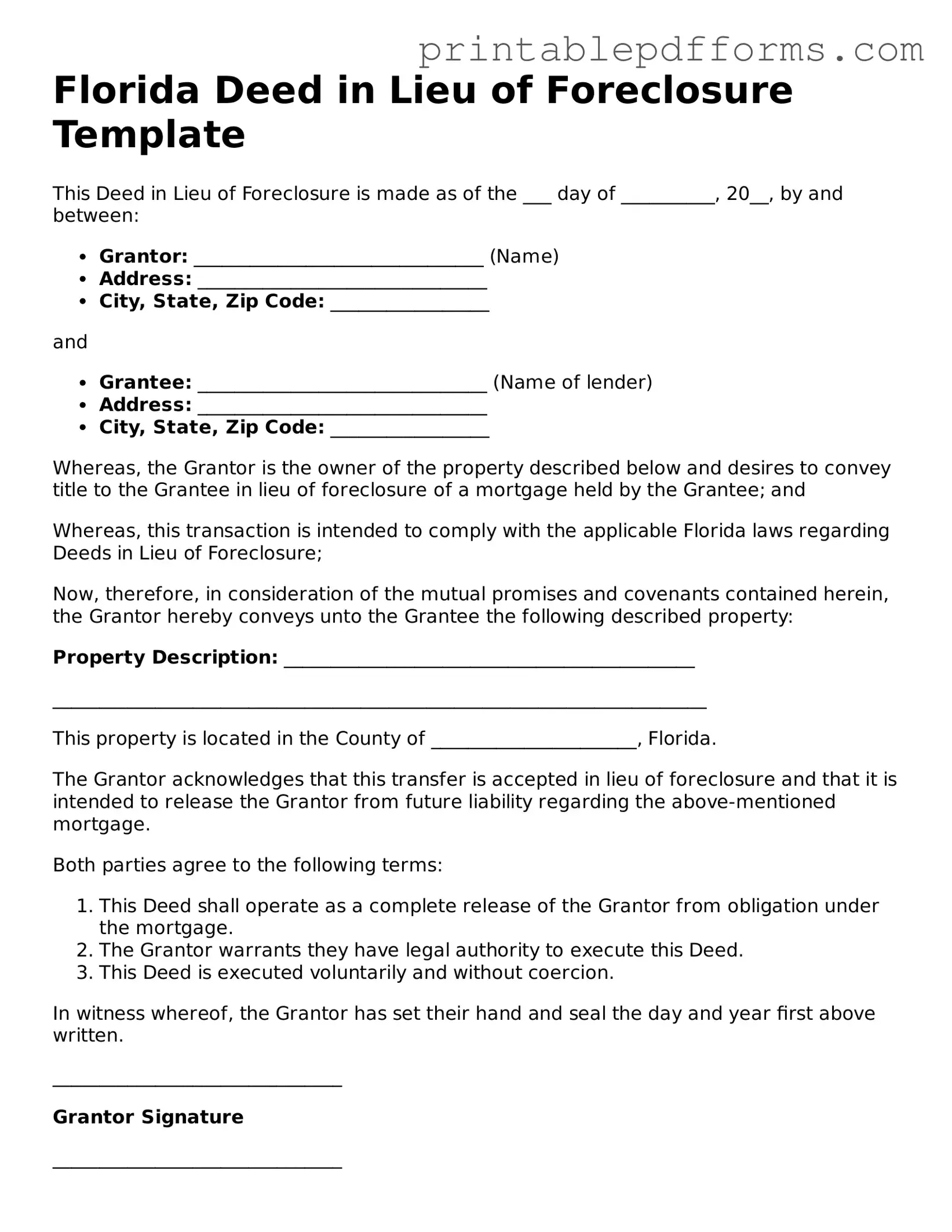Florida Deed in Lieu of Foreclosure Template
This Deed in Lieu of Foreclosure is made as of the ___ day of __________, 20__, by and between:
- Grantor: _______________________________ (Name)
- Address: _______________________________
- City, State, Zip Code: _________________
and
- Grantee: _______________________________ (Name of lender)
- Address: _______________________________
- City, State, Zip Code: _________________
Whereas, the Grantor is the owner of the property described below and desires to convey title to the Grantee in lieu of foreclosure of a mortgage held by the Grantee; and
Whereas, this transaction is intended to comply with the applicable Florida laws regarding Deeds in Lieu of Foreclosure;
Now, therefore, in consideration of the mutual promises and covenants contained herein, the Grantor hereby conveys unto the Grantee the following described property:
Property Description: ____________________________________________
______________________________________________________________________
This property is located in the County of ______________________, Florida.
The Grantor acknowledges that this transfer is accepted in lieu of foreclosure and that it is intended to release the Grantor from future liability regarding the above-mentioned mortgage.
Both parties agree to the following terms:
- This Deed shall operate as a complete release of the Grantor from obligation under the mortgage.
- The Grantor warrants they have legal authority to execute this Deed.
- This Deed is executed voluntarily and without coercion.
In witness whereof, the Grantor has set their hand and seal the day and year first above written.
_______________________________
Grantor Signature
_______________________________
Grantee Signature
State of Florida
County of ______________________
The foregoing instrument was acknowledged before me this ___ day of __________, 20__ by ______________________ (name of Grantor). They are personally known to me or have produced _________________________ (type of identification) as identification.
_______________________________
Notary Public Signature
_______________________________
Notary Seal
